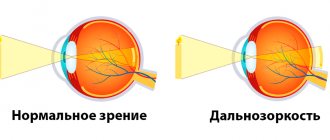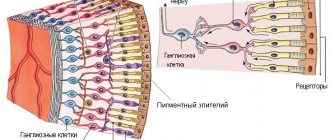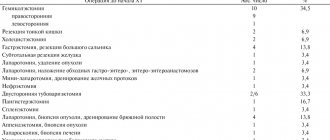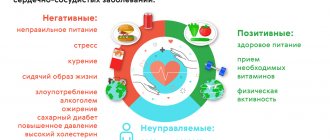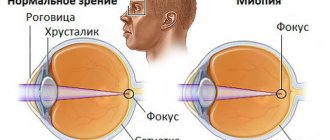Back to list Previous article Next article
15.10.2012
Tags:
gluten, diet, celiac disease
( 4 ratings, average: 5.00 out of 5)
Celiac disease. Start.
...The young mother is alarmed. Her baby developed so well in the first months of his life, but now it seems that he has become ill - he has become restless, capricious, and has a swollen tummy. A child's stool is especially frightening. It is somehow unusual - too light, loose, foaming. Is it really from simple semolina porridge? Or did the oatmeal milk mixture turn out to be of poor quality?
In such cases, it is better not to get lost in guesswork and not hope that “it will go away on its own.” The mere fact that an intestinal disorder is accompanied by “wrong” stool is a sufficient reason to sound the alarm: most likely your child has celiac disease or, as it is also called, celiac enteropathy (glutenenteropathy), Guy-Herter-Heubner disease, intestinal infantilism.
What lies behind these complex and obscure names? How dangerous is the disease for a child? Do only children get sick or do people of all ages suffer from celiac disease?
Treatment
Celiac disease has no cure, the only rule is to strictly follow a gluten-free diet (with the complete exclusion of gluten, its traces and control the possible intake of gluten from all possible sources (food and non-food, for example, glue on postage stamps and envelopes, toothpaste, some types of cosmetics) .
We must remember that celiac disease is a lifestyle, not just a disease. With strict adherence to all dietary recommendations, the prognosis is favorable, and the risk of consequences in the form of intestinal cancer and osteoporosis approaches the average in the population. For gluten allergies, in addition to the diet, if necessary, antihistamines, enterosorbents are prescribed - drugs that “seek out” allergens and toxins, bind them and remove them from the child’s body, enzymes and means for correcting intestinal dysbiosis.
Celiac disease: getting to know the “dossier”
The world learned about this disease in 1888, when the doctor at the Bartholomew Hospital in London, Samuel Guy, described its classic symptoms in children... Many years have passed since then. During this time, experts have compiled a solid “dossier” on celiac enteropathy, although many questions have not yet been answered.
So
what is celiac disease ? This is a chronic disease caused by hereditary factors . It is expressed in digestive disorders due to damage to the villi of the small intestine by certain foods . These products include cereals , namely wheat, rye, oats and barley.
They contain proteins of a certain group: gluten (gluten) and related hordein, avenin and others. Actually, they damage the mucous membrane of the small intestine, which disrupts absorption in the damaged areas. Exclusion from the menu of foods containing protein fractions of cereals leads to the restoration of digestive function. But as soon as gluten and its “relatives” enter the intestines again, everything starts all over again... Why this happens is not entirely clear. There is a hypothesis about an “enzyme defect ,” that is, a deficiency or complete absence of gliadinaminopeptidase and some other substances that are involved in the breakdown of cereal proteins. It is believed that an important role is played by the immunological component, that is, the reaction of the body’s defenses to gluten at the humoral and cellular level, occurring directly in the mucous membrane of the small intestine.
However, a direct connection between these disorders and flour products was established only in 1951 by the Dutch pediatrician Willem Dicke. A year later, a gluten-free diet was used for the first time to treat patients. In Russia, celiac disease seriously interested specialists in the 90s of the last century. Since then, there has been ongoing debate in our country about what it actually is - a syndrome or a secondary disease. In some regions of the Russian Federation, it is completely ignored and such a diagnosis is not made in medical institutions. But her clinical picture is obvious.
How to eat in kindergarten and school
In Cherepovets, kindergarten No. 114 has been running groups for children with celiac disease for several years.
“My daughter goes to kindergarten No. 114, where there is a gluten-free menu. The fee for such a kindergarten is slightly higher: in a regular kindergarten a day costs 123 rubles, but here it is 177,” says Elena Topnikova, mother of a six-year-old child with celiac disease. “Many people, when they hear that we have celiac disease, begin to gasp and ask how we eat. But there is nothing wrong with our eating habits. We are on a diet and only eat products labeled “Gluten Free”. I always read the ingredients of products. When we go to a cafe, we allow ourselves fruit and vegetable salads, but we check whether fruits, vegetables and bread are cut on separate boards. At home and in the garden, the diet is strict, and we rarely go to cafes.”
In a regular kindergarten, parents agree on meals with the management. At school, the responsibility for feeding children rests entirely with parents.
“My daughter was diagnosed with celiac disease at age five. She's nine now. We immediately went on a diet, but at first it was very difficult to find food. It's easier now. In the kindergarten, by agreement, we were provided with a replacement for products with gluten. The school didn’t cooperate, so my daughter now takes food with her,” says Vologda resident Oksana Petryashova.
As the Commissioner for Children's Rights Olga Smirnova notes, in educational institutions of the Vologda region there is no systematic work on organizing nutrition for children with digestive problems: “Unfortunately, such work does not exist. School leaders were given recommendations on organizing meals for children with dietary needs in accordance with the newly adopted methodological recommendations by Rospotrebnadzor.”
Gluten attacks - health suffers
Typically, celiac disease manifests itself during the first two years of a child's life . This often happens at 4-8 months of age, when mothers decide to feed their babies semolina porridge, milk formula, and give them cookies. Gluten intolerance may also appear later if the introduction of gluten-containing products into the diet is delayed for some reason.
universal symptoms of celiac enteropathy , that is, their severity varies. The clinical picture that is observed in children under two years of age can be called classic. It is as follows:
- increased abdominal circumference;
- decreased appetite;
- chronic diarrhea;
- vomit;
- intestinal dysbiosis;
- behavioral disorders (the child is irritable or, conversely, apathetic);
- growth retardation and/or retardation in physical development;
- thinning or complete absence of the subcutaneous fat layer.
Separately, it should be said about stool with celiac disease . In all respects it is atypical: abundant, liquid, distinctly pale or “multi-colored”, pasty consistency, foaming . Parents describe it more colorfully, saying that it is like eggplant caviar, sometimes reminiscent of rising dough or soap suds. The degree of abundance can be judged by the fact that the pot instantly fills to the brim. undigested food remains are found in the stool , which makes it resemble vomit. In some young patients, it has an “unpredictable” consistency, being mushy, liquid, or even formed. But in all cases its excessive abundance is noted.
In some cases, symptoms are less pronounced or completely absent. This is possible if the disease is detected in children over two years of age. These forms of celiac disease are called atypical. The difference from “classic” glutenenteropathy is that non-intestinal symptoms predominate. For example, an incomprehensible growth retardation or anemia that has arisen for no apparent reason. In patients, tooth enamel may be affected.
Where to buy gluten-free food
In Cherepovets, a selection of gluten-free products is only available in supermarkets, and even then not in all. A special department operates in a pharmacy on Pervomaiskaya. But gluten-free food costs much more than regular food.
“I live in the Zasheksninsky district. We sell gluten-free bread, pasta, flour, cookies and waffles only at Lenta. If you want something else, you have to go to Zarechye. Gluten-free products are very expensive: bread costs 254 rubles for 250 grams, a package of waffles for one evening costs 270 rubles, 400 grams of pasta costs 259 rubles, says Diana Pankova, a Cherepovets resident. “I have weaned myself off bread since childhood, but there are people who cannot live without buns.” When I walk past a bakery, especially when I’m hungry, of course I want a pie, but now it’s easier to perceive: you can’t do that and that’s it. And before it brought me to tears. I don’t buy semi-finished products - it’s not clear what they put in there.”
The importance of an accurate diagnosis
Unfortunately, celiac disease is often detected late. And this despite the ease of diagnosis. After all, a lot says about the disease: the cumulative data of the anamnesis, the characteristic appearance of the patient and the improvement/worsening of his condition, depending on whether he adheres to a gluten-free diet or deviates from it.
If gluten intolerance is not diagnosed immediately and treatment is accordingly started late, this leads to the development of complications . They are also associated with impaired absorption of nutrients. These are anemia, vitamin and protein deficiency, problems with the absorption of fats, microelements such as calcium and iron , etc.
So a preliminary diagnosis can be made with a high degree of probability. To clarify it, patients are prescribed:
- blood chemistry;
- X-ray examination (detects osteoporosis, intestinal dyskinesia and the presence of horizontal levels in the intestinal loops);
- scatological examination (shows the presence of fatty acids and soaps in large quantities in the feces).
It happens that celiac disease is mistaken for the intestinal form of cystic fibrosis, disaccharidase deficiency, or anomalies of the gastrointestinal tract. To find out what the patient actually suffers from, he is given a differential diagnosis, which allows one to exclude ailments that do not match the symptoms.
Prevention
There is no primary prevention for celiac disease. Secondary prevention comes down to diet and annual examination by a gastroenterologist. Pregnancy management in those suffering from this disease should be carried out with increased attention, since this pathology increases the risk of developing heart defects in the fetus.
Due to the variety of symptoms, diagnosis of celiac disease can only be carried out by qualified specialists using the latest techniques. The medical specialist has everything necessary to conduct a comprehensive examination of the patient’s body. You can make an appointment with a gastroenterologist at any time by phone or through the form on the website.
Sources:
- Bai J. WGO-OMGE / J. Bai, E. Zeballos, M. Fried // Practice Guideline Celiac Disease. - 2005. - Vol. 10. - P. 1-8.
- Belmer S.V. Celiac disease: from pathogenesis to treatment / S.V. Bellmer, T.V. Gasilina // Issues of modern pediatrics. - 2013. - T. 12. - No. 3. - P. 12-17.
- Kamalova A.A. Evolution of approaches to the diagnosis and treatment of celiac disease / A.A. Kamalova, M.O. Pirogova // Bulletin of modern clinical medicine. - 2013. - T.6. — Vol. 3. - pp. 40-48.
- Mikhalik D.S. Celiac disease: disease and lifestyle / D.S. Mikhalik [and others] // Zemsky doctor. - 2012. - No. 4. - P. 35-38.
- Roslavtseva E.A. Celiac disease: unresolved problems of pathogenesis, diagnosis and treatment / E.A. Roslavtseva [and others] // Issues of modern pediatrics. - 2005. - T. 4. - No. 6. - P. 48-57.

